Posted in Blog, Create, Lead by Jo North
Creative thinking: how to make the most of your creative brain
In this blog I’m going to share some simple, scientifically-proven ways that you can improve your creative thinking. This will help you to make the most of your business brain and improve your entrepreneurial performance.
I’ll also help you to fulfil more of your individual creative thinking potential by showing how to lose some of your cognitive inhibitions.
For even more creative thinking, facilitation and business growth tips, resources, techniques, have a look at all the free resources here .
Creative thinking in business
In business, creative thinking means coming up with fresh, new ideas, problem-solving and opportunity-finding.
Creative thinking is the raw ingredient for innovation.
Innovation is the purposeful conversion of ideas into a useable and useful solution.
Creative thinking for innovation has two key components:
- Originality: The idea is something new that is not simply an extension of something else that already exists.
- Functionality: The idea actually works or possesses some degree of usefulness.
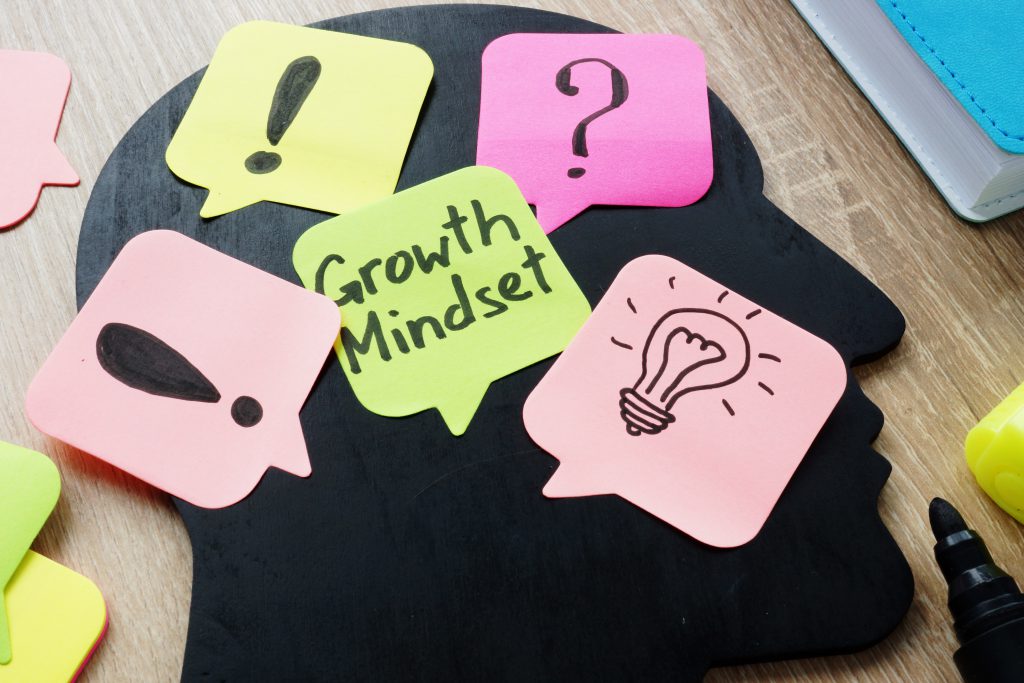
Types of creative thinking for business
The “four c” model of creativity suggests that there are four different types of creative thinking:
- “Mini-c” creativity involves personally meaningful ideas and insights that are known only to the self.
- “Little-c” creativity involves mostly everyday thinking and problem-solving. This type of creativity helps people solve everyday problems they face and adapt to changing environments.
- “Pro-C” creativity takes place among professionals who are skilled and creative in their respective fields. These individuals are creative in their vocation or profession but do not achieve eminence for their works.
- “Big-C” creativity involves creating works and ideas that are considered great in a particular field. This type of creativity leads to eminence and acclaim. It also often leads to world-changing creations such as medical innovations, technological advances, and artistic achievements.
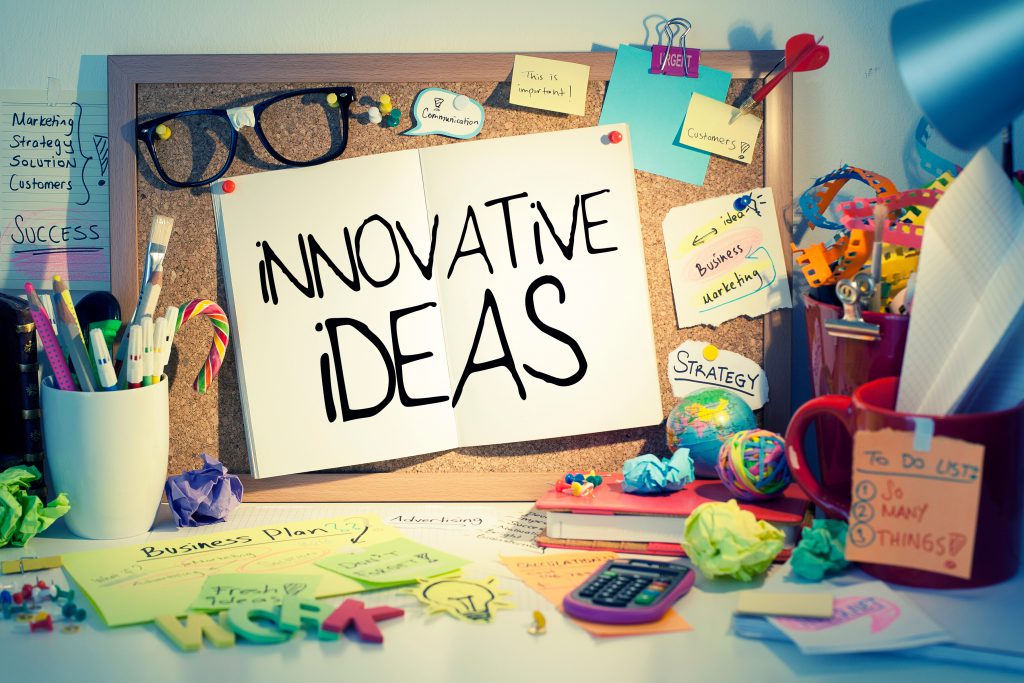
Whole brain thinking
Scientists (Beaty et al., see their study here) carried out an alternative usage creative thinking test study with more than 160 volunteers and fMRI.
The researchers wanted to know whether the brains of people who are consistently more creative would show different activation patterns than other brains, and which brain areas would be involved.
The results of the imaging revealed that the brains of the most creative volunteers showed a distinct pattern of activity across three brain networks:
• Default mode network (daydreaming & imagination)
• Salience network (deciding what needs our attention most)
• Executive control network (monitoring our behaviour)
In the highly creative brain, these three networks collectively host a myriad of interactions that produce striking ideas.
Roger Beaty, a Post-Doctoral Fellow in Psychology and the first author of the study says:
“People who are more creative can simultaneously engage brain networks that don’t typically work together.” They also evidence a “flexibility of thought” and “bring these systems online.”
Beaty et al, 2018 in ‘Creative Connectomes’.
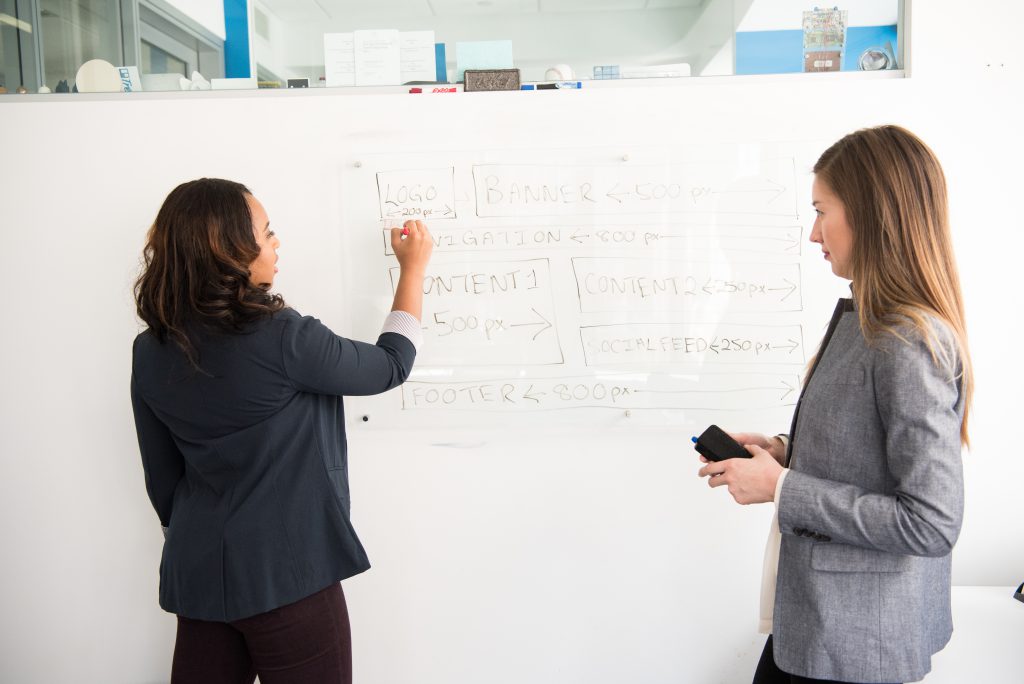
Your creative brain
Your creative brain is made up of around 10 billion nerve cells, or neurons. Each neuron can form up to 10,000 connections with other neurons. This makes a total of an estimated 100 trillion possible connections!
Our neurons communicate with each other via synapse. When a receiving neuron fires, it creates a domino effect, firing others.
Learning creates new connections, helping you to grow your own ‘neural forest’ and creating information superhighways in the brain.
Deliberative vs spontaneous creative thinking
The Arne Dietrich Matrix helps us to understand the four different types of creativity.
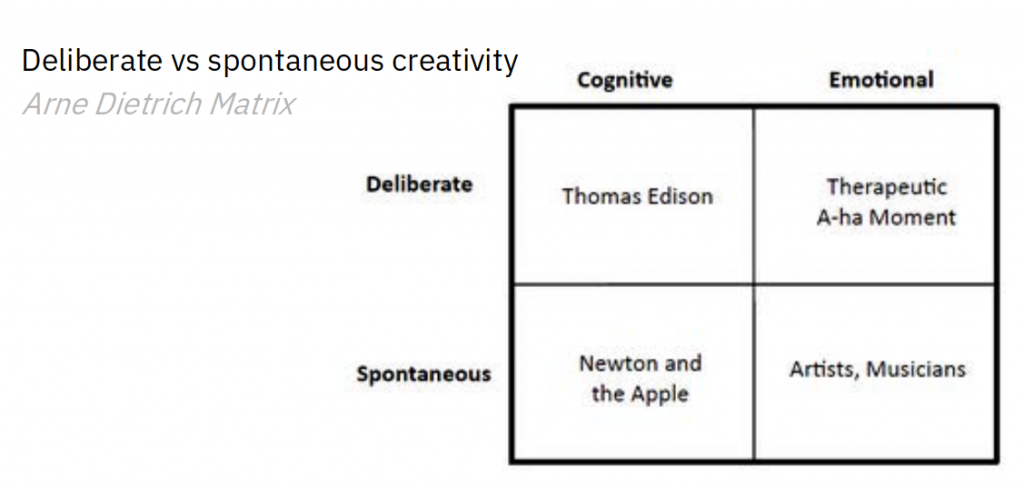
Cognitive creativity is based on expertise and existing knowledge in contrast with creativity that comes from emotions.
Deliberate creativity comes from intentional, focused work. Spontaneous creativity seems to come from nowhere, but in fact is the result of the ongoing work of our creative subconscious working in the background, coming together in response to an external stimulus.
The Creative Process
Creativity is a process. First, we absorb data and information. We then envision possibilities, make connections, reason and evaluate as to the usefulness of those connections.
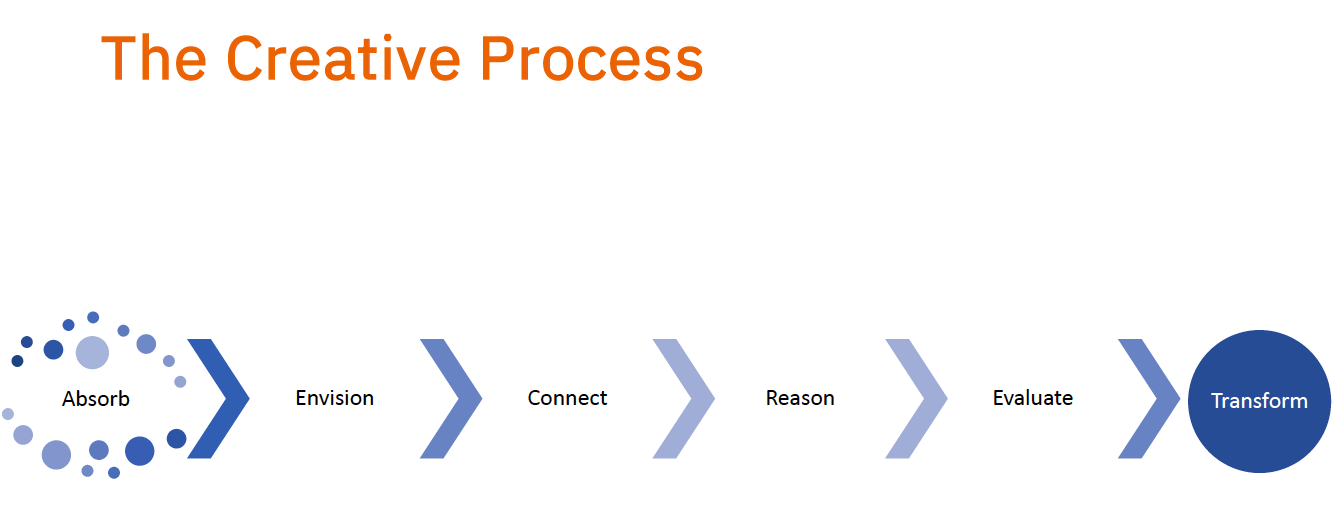
Two types of thinking are needed throughout the creative process. These are divergent thinking, when we open up our mind to discovering and exploring options; and convergent thinking, when we narrow down those options to make decisions.
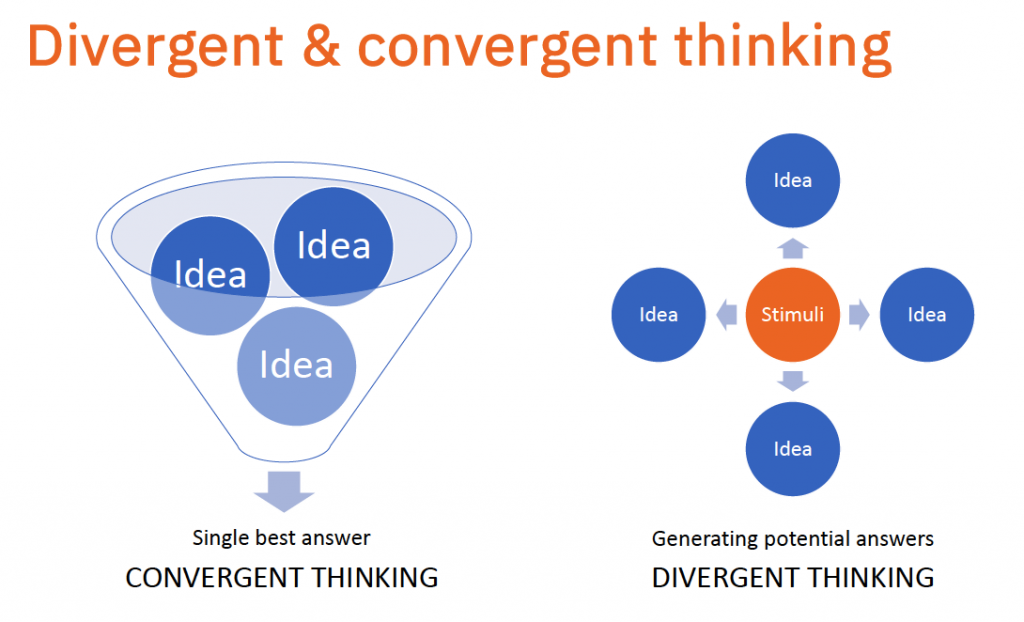
Curiosity and creative thinking in business
Research (e.g. Fernandez-Araoz, Roscoe, Aramaki) shows that there is a strong, positive correlation between curiosity – a form of divergent thinking – and competence in business.
We all show our curiosity in different ways. McKnight et al.’s five dimensional model explains these ways really well. Which ones resonate with you?
- Deprivation sensitivity is when we show our curiosity by working relentlessly to solve problems
- Social curiosity is when we show our curiosity through being genuinely interested in listening to and understanding other people
- Joyous exploration sees us demonstrating curiosity by being fascinated by the wonders of the world
- Stress tolerance helps our curiosity. It enables us to be willing to accept the risk and uncertainty of going into new territory
- Thrill seeking is also a form of curiosity. It helps to make us willing to take risks to experience new things.
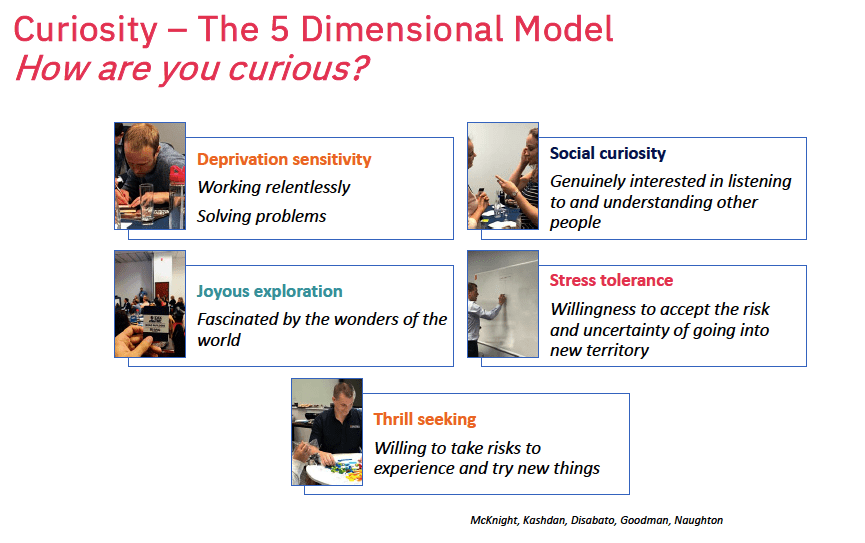
To leverage your creative brain, make sure that you:
- Explore widely before you begin your creative thinking process
- Make sure that you don’t cut your curiosity short and leap into action too soon
Creative thinking and inhibitions
Inhibitions are conscious or unconscious restraints, or filters, in our thinking that prevent us from taking action.
Behavioural inhibitions are useful because they prevent us doing socially inappropriate things.
Cognitive inhibitions are useful because they stop us from overprotecting all the masses of information that our senses are continually absorbing. This includes many kinds of noise; full details of what we see; our background thoughts and so on.
We are literally absorbing hundreds and hundreds of items of external and internal data at any moment. Cognitive inhibition means that that we are able to filter all of the background stuff out so that we can focus instead on what matters to us to survive or to perform.

Freedom and constraints
To be creative, we need both freedom and constraint in our thinking.
Constraints are helpful for creativity. Frank Gehry names one of his greatest architectural challenges as the time he was asked to design a house with zero constraints:
Frank Gehry, Architect
“I had a horrible time with it,” he said. “I had
to look in the mirror a lot. Who am I? Why am
I doing this? What is this all about?” It’s
better to have some problem to work on… I
think we turn those constraints into action.”
Sometimes, constraints are imaginary and self-imposed rather than real, or we may have self-limiting beliefs. It can be helpful to explore and challenge where constraints really exist, and where there may be more freedom than we think.
Whilst cognitive inhibition is really helpful for us most of the time, some of the information that we are naturally filtering out can be quite useful for creativity. We can learn to consciously turn our cognitive filters down to access more information for greater insight. How we do this is by changing the electrical frequency of our brain activity.
Electrical frequency of your creative brain
Normally at work, we are ‘switched on’ and engaged in active thinking. Our brains are using high frequency, low amplitude beta waves. To access a more relaxed and open mental state, we need to slow down the frequency and increase the amplitude of the electrical activity in our brains. These slower frequencies and wide amplitudes are alpha waves (when we are engaged in relaxed, reflective thinking) and theta waves (a more drowsy state than alpha waves).
Research by the late Colin Martindale and his team shows that highly creative people access low frequency states more readily. The good news is that this is something that we can all practise and get better at. Here are a few evidence-based, research-supported ways of losing some of your cognitive inhibitions and engaging in lower frequency brain states.
1. Using sleep
This one is based on Hobson and Stickgold’s research into the sleep-wake cycle.
They found that the brain can more readily access information from the unconscious mind if we wake up right after a period of R.E.M. , the type of sleep that we dream in.
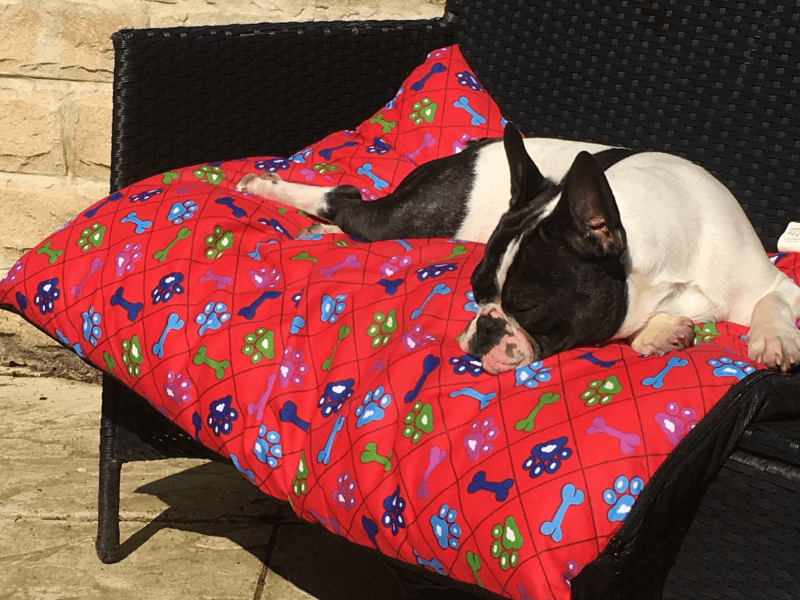
Improving your creativity doesn’t have to be a chore. Sleeping on a challenge or opportunity can make all the difference to the quality of ideas that you come up with. Image © Jo North, 2020.
First, reflect on the problem or opportunity that you want to solve creatively right before you go to sleep. Read any useful information about it to give your brain the data it needs to process your challenge while you sleep.
Go to sleep and then wake up about half an hour earlier than usual, when you will hopefully be more of less straight out of REM sleep. Jot down your thoughts on your problem or opportunity straightaway. You should have some insights and solutions!
2. Mindfulness meditation
Yes, mindfulness is very topical right now – and for good reason and with plenty of scientific support in many cases.
Mindfulness slows down our brain activity, helps us to balance our cognitive functions and notice more of the details around us.
It can help in different ways at different stages of the creative process:
- By meditating before you go into idea generation, you can promote divergent thinking, a mode of thinking that opens up your mind to new possibilities and ideas.
- When you want to reflect on, or further develop, your ideas, walking meditation can be a great way of working them through without any conscious effort or attention to your problem or opportunity. There is a great article on walking meditation by Thich Nhat Hanh
- More generally, practising regular meditation can help us to become more likely to notice those moments of creative inspiration when we have them. It quietens the mind, which means that that we have clearer visibility of our insights as they come up.
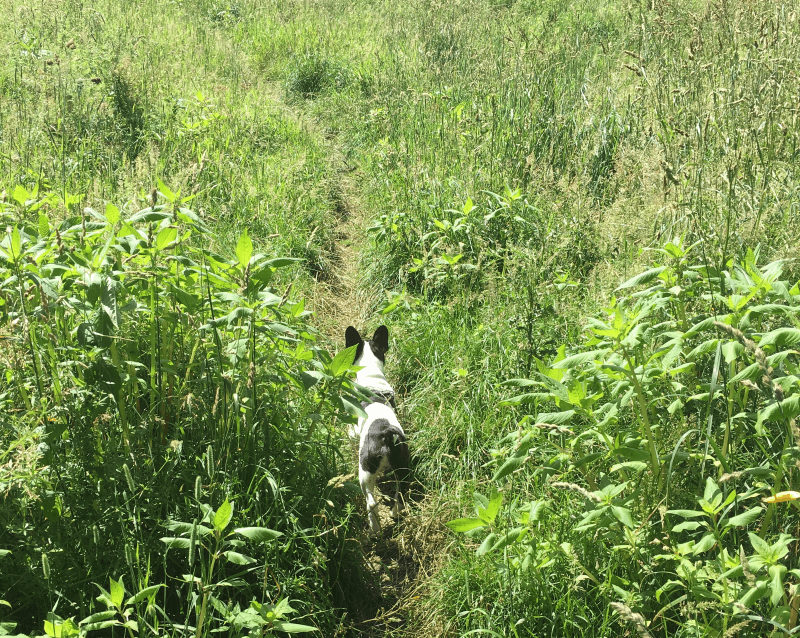
Walking meditation in action. © Jo North, 2020
3. Give your frontal lobes a break
The creative spot for our flashes of insight happen in a brain lobe called the superior temporal gyrus. Our left brain has short dendroids that are great at pulling in easily accessible information from nearby, but the dendroids in the right brain reach out much more widely. They can connect more disparate and more creative thoughts and concepts to combine them in a new way, giving birth to ideas that are pulled back into a part of our brain called the superior temporal gyrus.
The frontal lobes of the brain come into play as well. Think about when you have had some of your best ideas. The chances are that they came to you while you were doing something unrelated, and especially when you were more relaxed, doing a repetitive task, or when your mind was wandering. This is because, when we are focused, or actively engaged in working in more deliberate mode, the frontal lobes act as a sort of gatekeeper to prevent apparently non-related information or thoughts interrupting our process. But when our minds wander, or we relax, our frontal lobes take the opportunity to go on standby, which means that ideas can flow more freely and new thought connections, or ideas, can happen.
Researchers such as Kounios, a professor of Psychology, have discovered that literally milliseconds before these moments, just before you have your idea, your brain momentarily shuts down its visual area, in a sort of ‘brain blink’. In fact, all of us reduce visual stimulus when we need to have ideas, such as having to think on our feet to respond to a difficult question, which we do by looking down before we respond.
Shutting off visual stimulus allows us to focus on looking inwards just before the idea is created. But increasing visual stimulus at other times, for example by mindfully observing more of what is going on around us, increases creativity measured by the number, originality and usefulness of the ideas we have.

I love to use the process of intuitive collage using found images to relax, tune into my thoughts and give my frontal lobes a break. For some great insights on intuitive collage see Shelley Klammer here. Image © Jo North, 2020.
4. Know that you can grow your own creativity
Creativity is not an exclusive, fixed ability that only some people have. Of course, how your individual brain is structured, your environment and your own unique frontal lobes do impact your levels of creativity, but you have much more flexibility to improve and grow your idea generation capability than you might think.
Our challenge is that, like other aspects of how we are made, our brains incline towards the path of least resistance, and do what comes easiest and most naturally to us. So we literally can get into a rut with regard to how we think. To be purposefully creative, it helps us to go out of our way sometimes to deliberately disrupt how we normally approach things, to challenge our brains to take on new information and work from different perspectives.
This can feel uncomfortable and clunky at times when we start to do this, but that’s good news because it means that we are waking up different parts of our minds! And as with any exercise, the more we disrupt our thinking, the better and more fluid our thought processes will become, and ideas will begin to flow more naturally, in the same way that when you start to lift weights in the gym at first it feels challenging and heavy, and your muscles become sore soon after your sessions. But, by lifting the weights regularly, your muscles strengthen and the same weight feels less challenging over time, at which point you can increase the weight so that you continually feel challenged and grow in strength.
What next?
I hope that you go ahead and enjoy losing some of those cognitive inhibitions from time to time, to help with your idea generation and creative process in general. If you want to become even more advanced and develop your own creative thinking skills and potential to make greater impact in your work, try my Idea Time Academy creative thinking courses and masterclasses.
In the meantime, for free creative thinking tips, resources, techniques and much more, why not have a look at all the free resources here ready for you to download and use right now.

